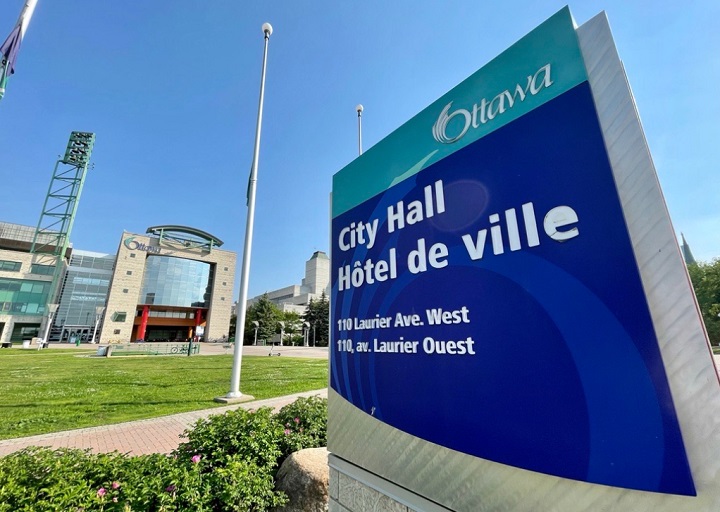Ottawa’s city council has given the green light to a new official plan to chart a quarter-century of expansion and intensification after a final debate Wednesday that saw the lands for the controversial Tewin community included in the blueprint for city-wide growth.

City council debated more than a dozen motions at its meeting Wednesday, largely to fine-tune neighbourhood-specific development policies in its new official plan, which will guide growth for the city through to 2046.
By that time, the city is expected to see its population rise by some 400,000 new residents and will look to accommodate that growth through 60 per cent intensification and a 1,281-hectare expansion to its urban boundary — the line that divides the city’s agricultural land from future housing stock.
The new official plan, approved with a vote of 21-2 at council but still requiring provincial sign-off, will see a number of existing communities become hubs for density and greater development around the idea of creating walkable, 15-minute neighbourhoods where the majority of essential services are close to residents’ homes.
Tewin planning merits debated
Among the new lands included in the expansion are 445 hectares near Carlsbad Springs in the east end dubbed Tewin, proposed for a 19,000-home development in a joint partnership from the Algonquins of Ontario (AOO) and Taggart Group.
The inclusion of the lands has been controversial.
Councillors added the Tewin lands to the list of expansion lands earlier this year despite staff scoring the area lower than other prospective lands based on the city’s planning criteria.
River Coun. Riley Brockington brought forward a motion seeking to take the controversial land out of the plan and substitute an area in South March that was initially included in staff’s recommendations and scored higher than the Tewin lands.
That proposal would leave a 270-hectare gap of urban land to be designated, but Brockington’s motion would have asked staff to find room somewhere in the city in the next five years.

Get daily National news
The Tewin lands have come under fire for being far removed from existing rapid transit and light-rail stations and for the difficulty of extending infrastructure to the area based on marine clay soil conditions.
Brockington said his motion objected to Tewin’s inclusion based on “planning merits,” seeing other areas of the city such as South March as preferable.

“Council is charged with making critical decisions that are in the long-term best interest of Ottawa residents and taxpayers,” he said. “Adding the Tewin lands to the urban boundary is not a sound planning decision.”
But Stephen Willis, Ottawa’s head of planning, noted that all the good land for development has already been included in the urban boundary and that any areas that will be added will come with challenges.
“There are no good options. There are no easy options,” he said, adding, “Tewin is doable, but it’s expensive.”
Making Tewin fit as a new community in Ottawa can be done through the secondary plan and other incremental development phases over the coming years, he said.
- NDP to join Bloc in backing Liberals against non-confidence vote
- Quebec premier calls on Bloc Québécois to help topple Trudeau government
- Via Rail CEO calls 10-hour train delay ‘unacceptable,’ says new evacuation plan in place
- Ethics commissioner will not investigate Boissonnault over ‘Randy’ texts, says the matter is closed
Willis noted that the provincial policy statement requires municipalities to hold a 15-year supply of development land at all times, and that leaving those 270 hectares up in the air could fail to meet those requirements.
As a result, the Minister of Municipal Affairs and Housing could unilaterally decide where those lands will be added to Ottawa’s urban boundary.
West Carleton-March Coun. Eli El-Chantiry, who originally moved to include the Tewin lands, said presenting the official plan for provincial approval with that gap leaves the city “vulnerable.”
While the ministry could still object to elements of the official plan, both Willis and Mayor Jim Watson — who himself previously served as Ontario’s housing minister — told reporters after council on Wednesday that they were confident the plan could proceed as is.
Willis said that, in his experience, the province “generally” does not overrule decisions by elected bodies.
Watson said any issue with the official plan would have to be “so out of whack” with the provincial policy statement to warrant sending a municipality back to the drawing board on any individual item.
Reconciliation aspects questioned
The mayor has meanwhile held up the lands as an example of reconciliation with First Nations in the area, but Algonquin Anishinabeg groups across the Ottawa River in Quebec have objected to those claims over longstanding concerns that the AOO does not represent the Algonquin nation as a whole.
The AOO has, in turn, defended the “rigorous enrolment criteria” set for its membership.
Wrapping up on Brockington’s motion, Watson said “today’s decision is about planning, it’s not about land claims.” But he went on to say that the city should go “beyond symbolism” when it comes to making land acknowledgements of unceded Algonquin Anishinabeg territories in his defence of Tewin’s inclusion.
He said it was AOO’s right to develop the land they purchased with Taggart outside of settlement claims with the province and the federal government.
“The Algonquins of Ontario should be able to define what reconciliation is to them, it’s not our job to dictate that,” he said.
Somerset Coun. Catherine McKenney asked Watson whether he had responded to letters from Algonquin chiefs expressing concerns about the Tewin inclusion. He said during council that he had written twice to the leaders and had not received a reply until yesterday, but has yet to respond.
Brockington’s motion to remove the Tewin lands from the urban boundary expansion was defeated with a vote of 8-15 — the same split for the final vote approving the overall map for expansion lands later in the meeting.









Comments